Here are 7 examples of wave technology software systems
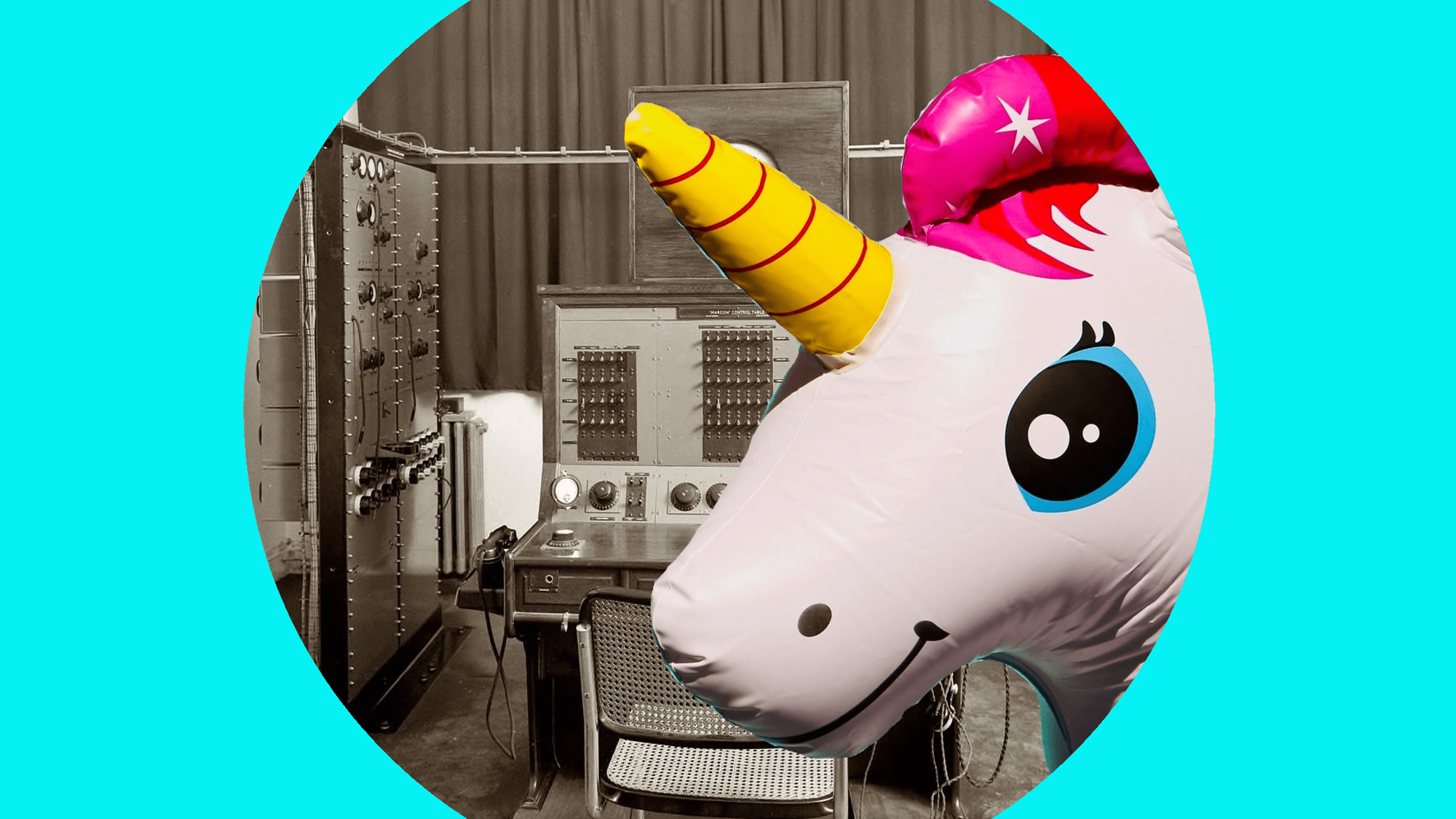
Cell phones are awesome, they connect us to the modern world and have more computing power than the initial moon landing. But without the software, they’re a paperweight (remember paper?). Just as wave pools are incredible, but without the software to control pumps and valves, they’re an expensive waterlogged hole in the ground not even suitable for swimming laps.
With no computer programs the contemporary world pretty much grinds to a halt. And of more importance, so would the surf in wave pools.
WavePoolMag took a peek behind this magic curtain to see what wave pool software is out there, what it’s capable of, and whether the computers and their AI will turn against us and go all Matrix on us.
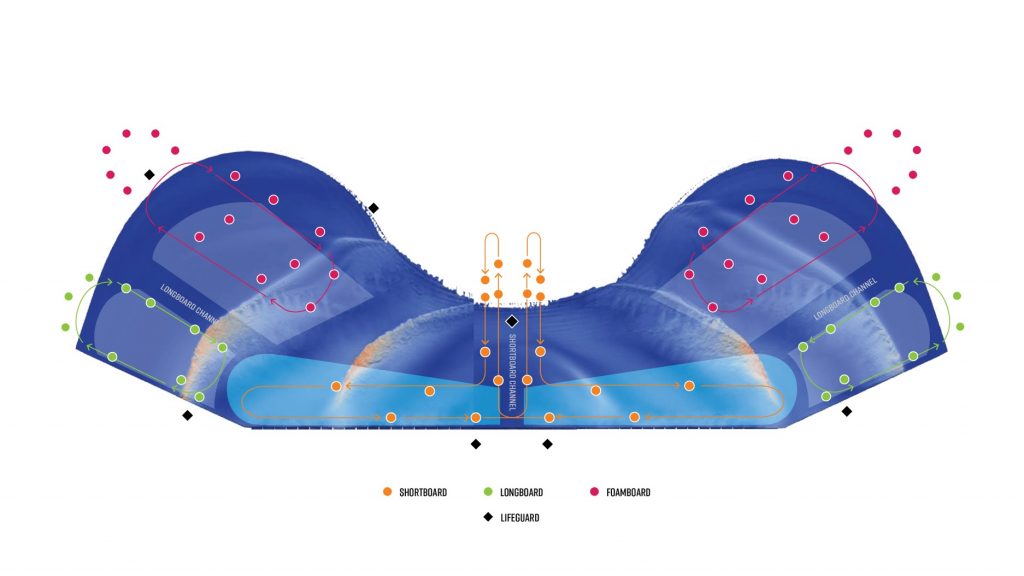
First up is Endless Surf who has a unique and highly personalized system in place that sends out a variety of waves catered to the preferences of the surfers in the pool. This is done through the Swell Studio, which the surf pool operator uses to make customized waves to cater to who is surfing in the pool.
Another unique aspect to Endless Surf is the different surf zones, you aren’t limited to only one side of the surf park and the areas aren’t assigned. “Within our unique heart-shaped pool we have three surf zones,” said Paul Chutter, co-founder of Endless Surf, “We have The Peak, The Inside, and The Shore which correspond to advanced, intermediate, and beginner areas.”
From an operations standpoint, with the pool at capacity with 75 surfers, the waves being pumped out (and their cadence) will reflect who is in the lineup at any given time. Have a group of pros in the pool and the waves will fire off fast and furious. But have a mixed-level pro and newbie group and the wave intensity will stagger.
Swell Studio, Endless Surf’s operating system, receives these pre-selected wave orders through Surf Concierge (a program/guest management system that can be personalized by each surfer with their wave preferences and more) and accurately identifies the surfers in the pool through their RFID wristbands. One surfer’s ideal session could be an order of three mellow turning waves to warm-up followed by a growing intensity of height and hollowness and then wind down to a long peeler to ride into the shore. This perfect session is created by the back of house operator (the Swell Shaper if we want to put a name to him/her – note there are capitals in that title, so we know how important they are!), who runs the pool through the Swell Studio interface and can build wave lists to satisfy the preferences of those in the pool.
“In reality, operators know that we aren’t all as good as in our imaginations and they need to flex sessions to reflect the reality of those in the pool, which may not match their booking confidence,” adds Chutter. “This can mean moving an intermediate surfer from the Peak to the Inside zone. Or it could be changing up the set sequence live during the session to adapt to those in the pool. Most places will have staff on-site to make these changes seamless and even take ‘in session’ wave requests to instruct the Swell Shaper to tone it down or amp it up – whatever the situation requires.”
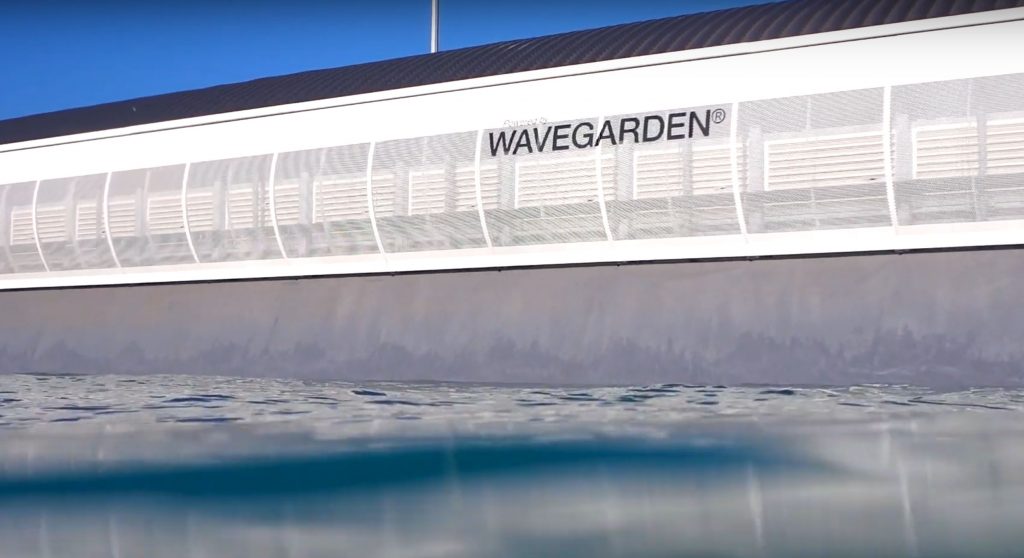
Like all machines and especially modular ones, the operation of the Wavegarden Cove is governed by bespoke control software. Wavegarden has designed and implemented its own advanced control system, which uses the latest 4.0 industry technologies to provide a complete single-source turnkey solution. The system is completely customized for Wavegarden Cove surf lagoons in continuous evolution.
The control system is run by a Profinet Real-Time Industrial networking solution which, according to marketing materials, “is the world’s most advanced Ethernet communication protocol in data exchange between controllers and devices.”
Every Wavegarden machine has full remote accessibility and control from Wavegarden HQs for both testing and software upgrades. (Many wave commissionings are run remotely from the company’s HQ in the Basque Country of Spain.)
The versatility of the Wavegarden Cove technology allows the creation of a diverse and extensive wave menu called, uniquely enough, the Wavegarden Wave Menu. The Wavegarden Wave Menu system was developed in-house 10 years ago and has been continually modified and upgraded. The distributive control system uses both Programming Logic Control (PLC) and PC-based systems.
The variety of the wave menu and the precision of the wave generation process are based on a high-performance full motion control run by customized algorithms developed by Wavegarden. This control system adjusts and optimizes the performance of the wave generation system in real-time.
A simple and clear touch screen panel allows the operator to choose pre-programmed surf session ‘playlists’, which provide a specific number of different types of waves within a surf session to match the ability levels and the number of surfers in the water. Pre-programmed sessions for a variety of customers – Beginner, Improver, Intermediate, Cruiser, Advanced, Expert and Professional – start with the push of the button and run automatically without any further input from the operator.
The Wavegarden Wave Menu system can create a completely customized ‘A La Carte’ surf session to match the desires of each surfer in the lagoon. Any of our 25+ wave types can be launched individually so that it’s possible to have a cruiser wave for a longboarder followed directly by a thick barrel for an expert surfer if required. These customized sessions are perfect for groups of people who book a private session and want a fully customized session rather than something from the main menu.
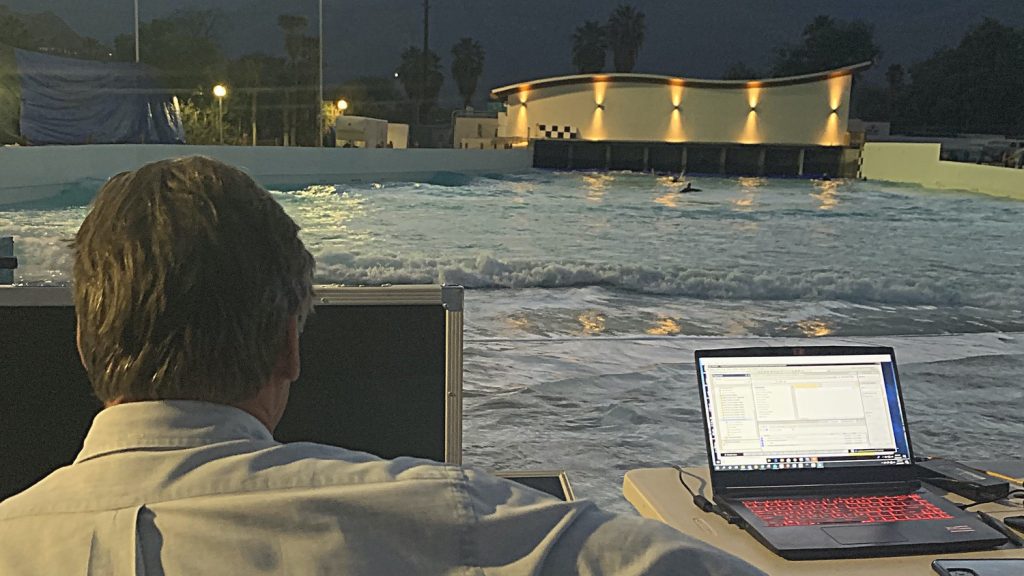
“When I first started, surfing was definitely in the backwaters,” says SurfLoch’s founder Tom Lochtefeld – who opened his first commercial artificial wave, The FlowRider, in 1991. “You need a market to create value to entice a company to invest in software and advanced machinery. And so it’s been these combinations of elements all coming together at once which has allowed us to get to where we are now.”
With a small team of engineers, Tom and his crew utilized an open ecosystem of software and automation so communication with each other and the data could be leveraged by their partners in the construction of facilities and building equipment.
Surf Loch combined the real and digital worlds by creating a comprehensive digital twin of their wave before testing it in their facility. They discovered that the generated virtual model and the physical wave were identical. The digital twin also meant Surf Loch had the capabilities to create and test different wave variants to ensure their virtual waves were comparable to the variety of waves surfers experience in the ocean.
Creating a surfing wave necessitates mathematical precision. It requires controlling the valves, which control the air, which control the water, which controls the wave breaking. To meet this challenge, Surf Loch engineers used Simcenter (a Siemens company) for airflow and strength analysis of the big pneumatic fans in the caissons. The software allows SurfLoch to program, create and optimize its waves.
While testing has been done and many waves were ridden with their system at the Palm Springs Surf Club in the Californian desert, it’s yet to officially open.
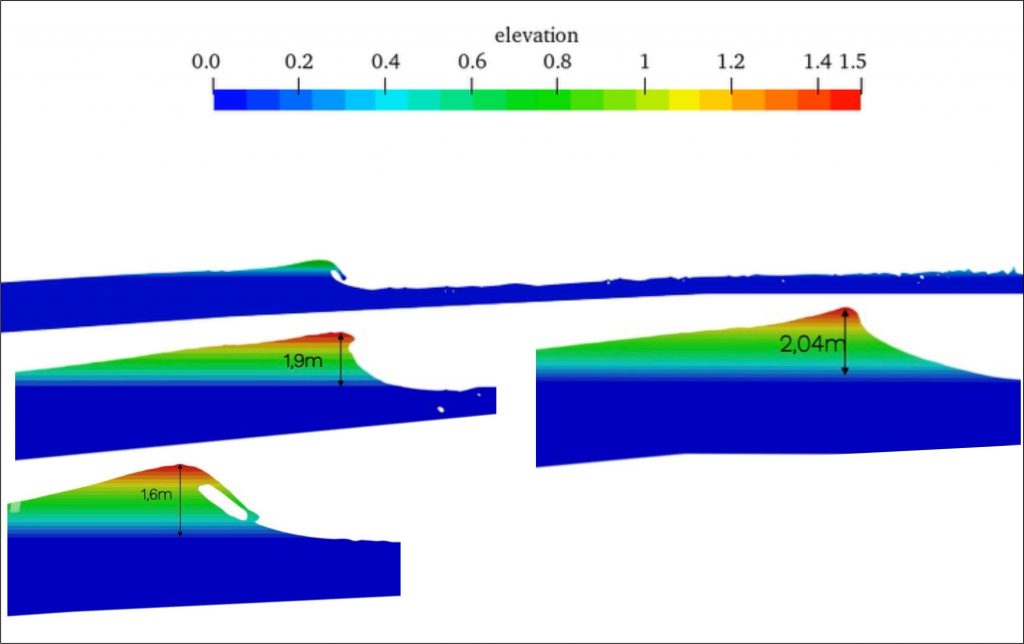
Fabio Ferraz, Director of Development for SurfPark Resort, a Brazilian company set to open its first pool by late 2021, shared with us how his new system works. The company has been ultra-secretive about its projects in terms of tech and layout but did offer that SurfPark Resort has a team of factory-trained programmers to program everything without the need for third parties.
“Our automation system that controls the motors can do whatever we want it to,” said Ferraz. “From increasing the wave interval, making waves of different sizes, we can control both the motors together and independently, that is, I can generate information for each motor.”
Included in the screen controls is also, information about water temperature, cleaning levels, salinization, engine temperature, and warning signs in case any engine stops or one starts to reach high temperatures. The team can also remotely access the machines to reprogram any information, without the need to send a programmer to the site.
The company can make up to 5 types of waves.
“Our wave design is a mixed wave, where along the path of the wave, you have several shapes, one being a full drop, then we can ‘mix’ the wave between tubes and walls for maneuvers.”
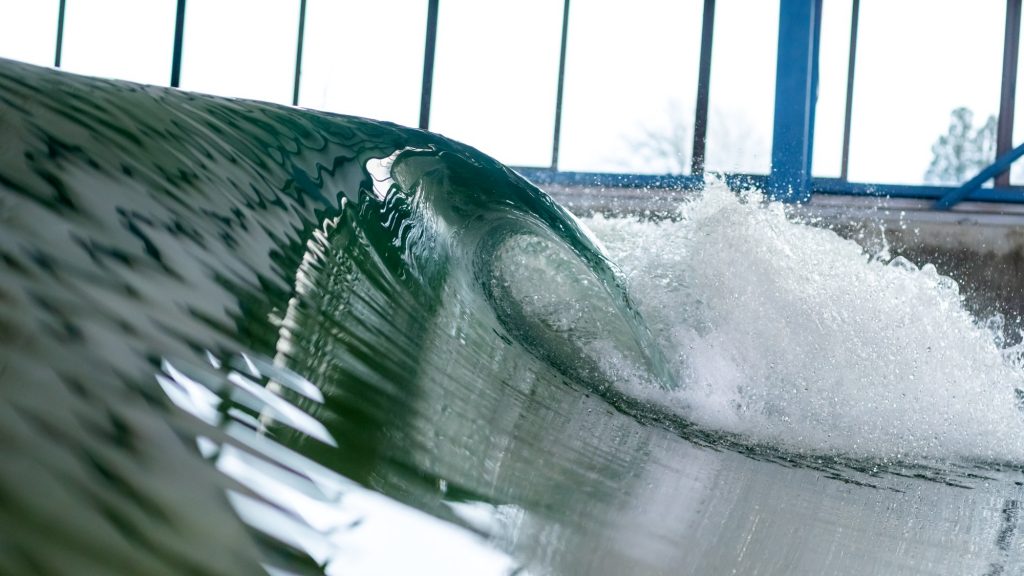
Dr. John Dascomb and Oriol Vicente from Westlake Wave Co. A company aiming for the “every surfer” market – those wanting fun waves without slabs and air sections. More details on their vision are here.
Westlake says they built a custom Linux-based control program and GUI – that’s a Graphical User Interface – which has a commercial mode and manual mode. In commercial mode, the company uses a set of pre-programmed wave profiles that operators can choose from.
“We are still in the development phase so nearly all our wave generation is manual mode. In manual mode, the operator can create any paddle motion they want. (Westlake operates a paddle system, rather than compressed air, to generate waves),” said Oriol Vicente. “There are thousands of possible combinations we can choose from to create different waves.”
He added they use 20 independently powered and controlled paddles to generate swells of varying heights, shapes and intensities. And that it’s fully customizable to a client’s needs.
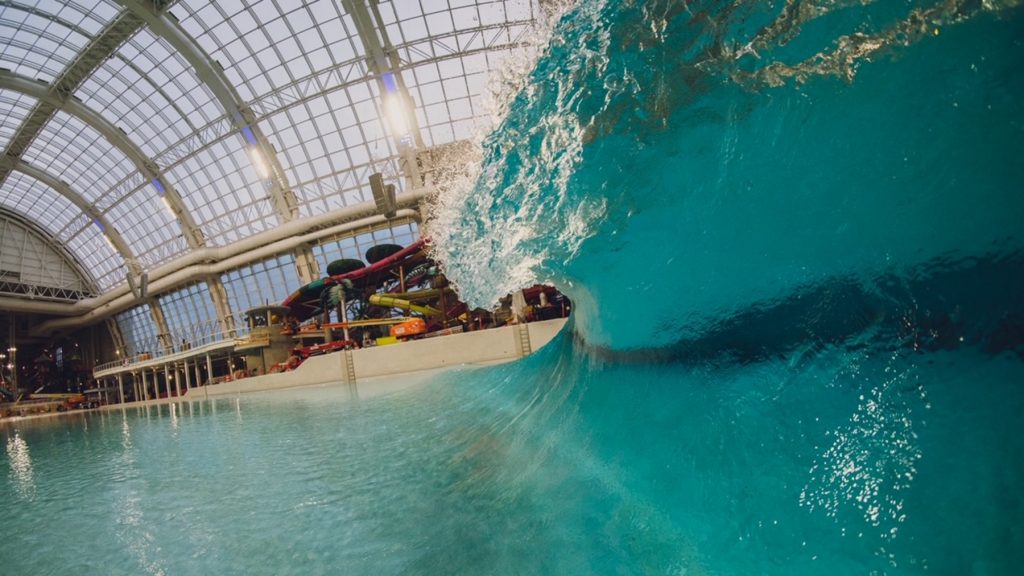
Wave pool technology from American Wave Machines “fires” air pressure from a series of chambers to create a swell that propagates toward the shallow side of the pool where it crests and breaks. The firing sequence is reversible, so PerfectSwell wave pools can create left and right-hand waves. Sophisticated software called the “Phased Array Control System” controls the timing and power pushed into the swell by each chamber, giving operators the flexibility in wave size and shape to create such branded gems as the Wedge Barrel and Freak Peak.
SwellMFG Executive Director Matt Gunn and Master Engineer John Bushey said their wave software is designed entirely in-house, including motion control, safety systems, operator interface, and wave creation.
The Swell MFG Wave Programming software provides a simple graphical interface to quickly create and manage complex wave shapes. The wave software provides up to 10 adjustable parameters with each module for designing variation in wave height, period, steepness, and shape. A twenty-channel system will have up to 200 parameters to adjust waves.
The design interface uses graphical changes on the screen to give the local operations team the ability to create new wave profiles and play with options. Each parameter is quickly and intuitively adjusted with visual feedback to guide the process. Newly created wave profiles are played out immediately to see what magical waves have been stirred up. Desired waves are named and saved for continual playback on demand.
“We are currently installing our first full-scale wave system at Revel Surf, located within the Cannon Beach development in Mesa Arizona,” said Gunn. “The system will be tested and optimized during the initial phases of operation. Once a system is up and running in a surf park, Swell MFG will support system operators with software maintenance, updates, and enhancements. The operator can create and save new wave profiles on the fly.”
Gunn added that there is no limit to the number of waves and combinations that can be created and saved for playback. Based on the created wave profile, waves will shift from mellow peeling waves clear to double up barrels and crossed up sections for airs.
“When peak waves (with left and right) or multiple reefs are designed into the wave pool, the software is also capable of creating different wave experiences in different areas of the pool at the same time,” added Gunn. “For example, a peak where the right-hand wave is a crumbly lip and the left has a barrel.”
Gunn added that software, when working well with a mechanical wave-generating system, is basically limitless.
“The software for a particular installation will be tuned to prevent wave programs that exceed the mechanical system limits or create dangerous conditions for the users,” said Gunn. “Wave generation hardware has inherent physical limits, while the input to the software is only limited by what you can dream up.”
Related Coverage
